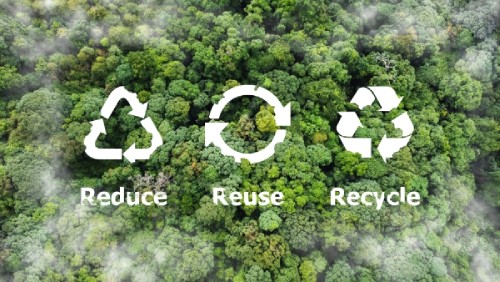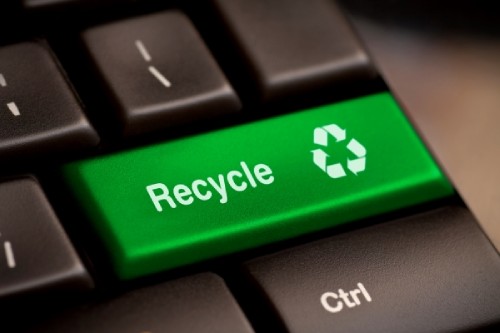
Corporate Social Responsibility (CSR) is a company’s effort to improve its social, environmental, and economic impact. CSR has become increasingly important as consumers, investors, and governments scrutinise businesses’ effects on society and the environment. One aspect of CSR gaining attention is IT recycling, which involves responsibly disposing of electronic devices and equipment. Effective IT recycling programs reduce environmental footprints, protect data, and support the circular economy. Implementing IT recycling initiatives helps companies fulfil their CSR obligations and contributes to a sustainable future.
The Benefits of IT Recycling
Environmental benefits

IT recycling offers numerous environmental benefits, including the reduction of electronic waste (e-waste) and its impact on climate change. E-waste contains hazardous materials such as lead, mercury, and cadmium, which can pollute soil, water, and air when disposed of improperly. By recycling electronics, we conserve natural resources through reuse and refurbishment and ensure safe disposal of hazardous materials. Moreover, recycling electronics reduces the demand for new raw materials, thereby decreasing greenhouse gas emissions associated with mining and manufacturing processes.
Economic benefits
IT recycling provides several economic advantages, including cost savings through proper disposal and repurposing. Companies can save money by donating or selling still-functional equipment, rather than purchasing new products. Additionally, recycling electronics promotes increased efficiency and productivity by allowing organisations to upgrade their technology without accumulating unnecessary hardware. Furthermore, companies that prioritise IT recycling often enjoy enhanced brand reputation and customer loyalty, as environmentally conscious customers prefer to do business with sustainable organisations.
Aligning IT Recycling with Corporate Strategies
To effectively align IT recycling with corporate strategies, businesses can take a comprehensive approach that incorporates various elements. One key step is to partner with a reputable IT recycling service provider, such as ‘Recycling Your IT’, to manage the disposal of electronic waste in an environmentally responsible manner. This helps ensure that sensitive data is securely destroyed, while also maximising the recovery of valuable materials from retired IT assets.
Another important aspect is setting clear goals and metrics for measuring the success of the IT recycling program. This could include targets for the percentage of electronic waste diverted from landfills, the amount of materials recovered, and the cost savings achieved through proper disposal. Regular monitoring and reporting of these metrics can help organisations track their progress and make adjustments as needed.
Engaging employees and stakeholders in the IT recycling process is also crucial for its success. Companies can raise awareness about the importance of responsible electronic waste management through internal communications campaigns, training sessions, and workshops. Encouraging employee participation in the recycling process can help foster a culture of sustainability within the organisation.
Best Practices for Implementing IT Recycling Programs
Implementing an effective IT recycling program requires careful planning and execution. Conducting regular audits and assessments helps identify redundant or unused equipment, which can then be separated from valuable assets that can be donated or resold. It is essential to have a clear understanding of what can be recycled and what cannot, and to have a plan in place for properly disposing of hazardous materials such as batteries, toner cartridges, and CRT monitors.
Donating or reselling still-usable equipment not only reduces waste but also helps to extend the life of valuable assets. When equipment reaches the end of its useful life, it is important to properly dispose of it through a certified recycler who adheres to strict safety and environmental standards.
Tracking and reporting progress and achievements is also crucial for gauging the effectiveness of an IT recycling program. Key performance indicators (KPIs) such as the total weight of equipment collected, the number of items recycled or donated, and the cost savings achieved through proper disposal can help organisations measure their success and identify areas for improvement.
Challenges and Opportunities in IT Recycling

IT recycling poses several challenges, including addressing data security concerns. When disposing of electronic devices, it is essential to ensure that all data is properly destroyed to prevent unauthorised access and protect sensitive information. Recycling Your IT, a leading IT recycling company employs rigorous data destruction methods to guarantee that all data is safely eradicated.
Another challenge is managing logistics and transportation, particularly when dealing with large quantities of equipment. Staying up-to-date with changing regulations and technologies is also critical, as new rules and innovations can impact the way IT recycling is conducted.
One of the most significant opportunities for businesses that recycle their IT is the potential for improved brand reputation and customer loyalty. By publicly committing to sustainable practices, businesses can demonstrate their values and build trust with environmentally-conscious consumers. This can lead to increased customer loyalty and retention, as well as positive word-of-mouth advertising that can attract new customers. In addition, businesses can use their IT recycling efforts as a marketing opportunity, showcasing their commitment to sustainability and differentiating themselves from competitors.
In summary, IT recycling is a vital aspect of sustainable IT management that offers numerous benefits for businesses, individuals, and the environment. By summarising the key points discussed in this article, we can see that IT recycling can help reduce e-waste, lower carbon emissions, conserve resources, and improve brand reputation. To embrace IT recycling as part of their corporate social responsibility (CSR) strategy, businesses should establish a comprehensive recycling program, educate employees and customers, and partner with certified recyclers.
As technology continues to advance and play an increasingly prominent role in our daily lives, the importance of sustainable IT management will only continue to grow. Businesses must prioritise IT recycling and take proactive steps towards reducing their environmental footprint. Not only does this make good business sense, but it is also a moral obligation to protect the planet and its inhabitants for future generations.
